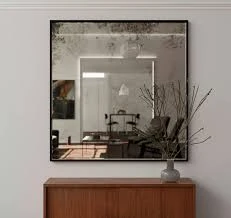

The Allure of Lightly Frosted Glass A Delicate Balance Between Privacy and Transparency
Lightly frosted glass serves as a captivating material in contemporary design, merging functionality with aesthetic appeal. As an element that elegantly mediates between openness and seclusion, frosted glass has become a popular choice in a variety of architectural and interior design applications. Its enchanting appearance is not only a visual delight but also offers practical benefits that cater to the needs of modern living and working environments.
When light is diffused through lightly frosted glass, it creates a soft, ethereal glow that can transform any space. Unlike clear glass, which can create stark contrasts and harsh shadows, lightly frosted glass provides a gentle illumination that enhances the atmosphere of a room. This quality is particularly beneficial in settings such as offices, where the right balance of light can foster creativity and productivity. In homes, frosted glass panels or doors can infuse bathrooms and bedrooms with a serene ambiance, making them havens of relaxation.
One of the most appealing aspects of lightly frosted glass is its ability to offer privacy while still allowing light to permeate. In urban environments where space is at a premium, the need for privacy can clash with the desire for natural light. Lightly frosted glass offers a perfect compromise. It conceals views and obfuscates details without entirely blocking the light—ensuring that spaces remain bright and inviting. This feature makes it a preferred choice for interior partitions or windows facing busy streets, as it allows occupants to enjoy both seclusion and luminosity.

From a design perspective, lightly frosted glass can be used creatively to enhance aesthetic qualities
. Its subtle texture and translucence engage the eye, drawing attention without overwhelming other design elements. It can serve as a stunning backdrop for artwork or plants, allowing them to stand out while benefiting from the soft light filtering through. The versatility of this material means it can be incorporated into various styles, from modern minimalist to warm and rustic environments.Moreover, lightly frosted glass can be combined with other materials to create visually intriguing contrasts. For example, pairing it with dark wood or steel can produce a striking balance, where warmth is tempered by the coolness of the glass. Designers often play with layering frosted glass with different finishes and colors, resulting in unique architectural features that evoke curiosity and admiration.
The environmental aspect of frosted glass should not be overlooked. Many manufacturers are now producing it using eco-friendly techniques and materials, aligning with the growing demand for sustainable design options. The ability to harness natural light through lightly frosted glass can also reduce reliance on artificial lighting, contributing to energy efficiency in both residential and commercial settings.
In conclusion, lightly frosted glass is more than just a decorative element; it embodies a harmonious synergy of privacy, light diffusion, and artistic expression. Its versatile applications and striking aesthetic qualities render it an invaluable resource for architects and designers. As trends continue to evolve in the realms of architecture and interior design, lightly frosted glass remains a beloved choice, enriching spaces with its delicate beauty and functional advantages. Embracing this material is a step towards creating environments that are not only visually appealing but also conducive to modern living.